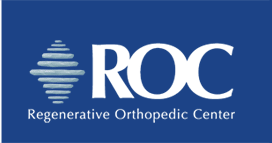 |
 |
|
|
Table of Contents Two weeks after receiving a partial knee replacement.
ACL RuptureClick here for example images, treatment, and additional information.
ACL injuries are fairly well known orthopedic injuries to anyone who follows
sports. These injuries usually are season ending injuries and although most
individuals are able to return to the same level of sport participation, not all are
able to return to competitive sport.
Knee ArthritisClick here for example images, treatment, and additional information. Articular Cartilage is the firm white smooth covering at the end of a bone that contacts another bone allowing for motion (joint). Loss of this cartilage for any reason is arthritis. Arthritis can occur due to “wear and tear” but also due to inflammatory disease such as rheumatoid arthritis or psoriatic arthritis, due to trauma of the joint, or disruption of the blood supply to the underlying bone (avascular necrosis). Knee Cartilage InjuryClick here for example images, treatment, and additional information. Articular Cartilage is the firm white smooth covering at the end of a bone that contacts another bone allowing for motion (joint). Loss of this cartilage for any reason is arthritis. Arthritis can occur due to “wear and tear” but focal arthritis can occur due to trauma of the joint associated with a kneecap dislocation, during ACL rupture or meniscus injury. These lesions can present as cartilage “peeling”, “delaminating”, or as a flap. Knee DisordersClick here for example images, treatment, and additional information.
Knee disorders are exceptionally common among both active and sedentary individuals.
Symptoms may include pain, swelling, a sense of catching or giving way. Certainly many issues
of the knee occur after a traumatic injury (car accident, fall, sports contact injury) but many
significant injuries can occur without major trauma. ACL ruptures commonly occur during
sports, but surprisingly often without a collision event. Meniscus tears commonly occur without
any specific recalled trauma. Over the past several years, a separate diagnosis (meniscal root
avulsion) has been identified and causes rapid progressing of knee arthritis.
Meniscus TearClick here for example images, treatment, and additional information.
A torn meniscus is a common cause of knee pain, swelling, and a sense of catching. The tear is
often caused by a twisting injury but not infrequently the exact event will not
be known. The majority of the meniscus has no blood supply, so the tear will
not usually heal on it’s own. The majority of the meniscus also has no nerve
endings, so the meniscus itself is not painful, but changes in pressure to the
adjacent bone and joint lining cause the sense of pain.
Partial Knee ReplacementClick here for example images, treatment, and additional information.
This procedure is appropriate for an individual with end stage arthritis isolated to one area (compartment) of the knee. Initially, the symptoms from knee arthritis in one
compartment is managed in a similar fashion to symptoms from global knee arthritis. Patients with single compartment knee arthritis may also benefit from a brace
designed to remove stress from the arthritic side. If a patient continues to have pain and limitation in functioning due to their arthritic symptoms, surgery may be
appropriate.
Total Knee ReplacementClick here for example images, treatment, and additional information. When patients continue to have significant pain and restriction of activities due to end stage arthritis of the knee, and despite non-surgical options (our office offers the full array of these options including therapy, injections, bracing, discussion of weight loss and nutrition) joint replacement becomes a consideration.
|
| Copyright © - All Rights Reserved - Jeff Feinblatt MD PC - Design & Hosting by WORD Marketing | ||